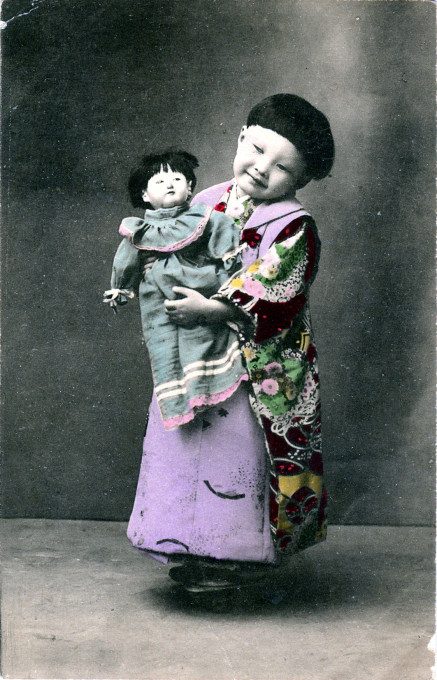
A Japanese boy holding a Western-costumed Ichimatsu doll, c. 1910, with matching “rice bowl” haircuts. The original Ichimatsu were named after an 18th-century Kabuki actor but from the late 19th-century onward the term was been applied to all child dolls.
“Annually, in early June, a Buddhist service is held at the Teikoku [Imperial] Primary School in Nish-Sugamo, Tokyo, for dolls that have been broken beyond repair. The dolls are buried in the playground of the school, their grave being marked by a stone about 2 ft. high, inscribed ‘Grave of Dolls’.
“Since the service started in 1918 several hundred broken dolls have been buried there. The ceremony is always largely attended by school children and their mothers. Priests chant the sutra intended to compose the soul of the dead. This service is an outgrowth of the Doll Hospital conducted by the school since 1913. An expert repairs all dolls turned in at the ‘hospital’, and those broken beyond repair are saved for the annual ceremony – which never fails to delight and impress the children.
“Dr. T. Nishiyama, the school principal states: ‘Dolls have been the intimate friends and companions of children from time immemorial and they are regarded and treated by children as living things and are factors in their education … The dolls thus treated here have exceeded 10,000 in number.'”
– We Japanese, Vol. 1, by H.S.K. Yamaguchi, Miyanoshita Fujiya Hotel, 1937

